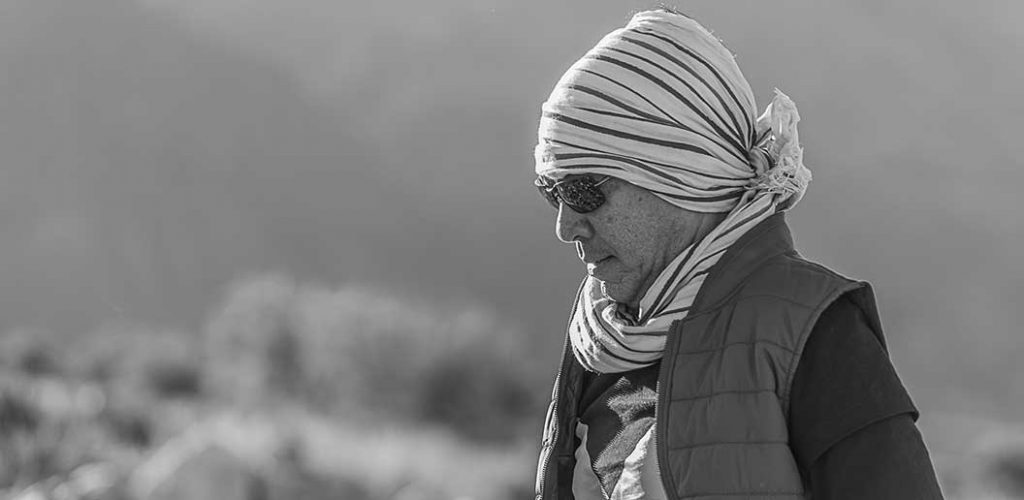The Office of Bangkok Architects, better known as OBA, are masters of distinctive architectural designs across Thailand and beyond. Founder, Principal and Managing Director of OBA, Smith Obayawat fuses form with function, creating a structure of contemporary sophistication. A well-known lecturer and leading figure in Thai architecture circles, Smith Obayawat is renowned for his rich portfolio of boutique hotels, commercial properties and exclusive country clubs. He has won numerous awards as well as the design competition for the Thailand Pavilion at Expo Milano 2015.
OBA’s services include large-scale urban designs, retail & mixed-use shopping centers, cinema complexes and other entertainment venues, as well as residential developments and luxury resorts. Their projects can be found in over 10 countries, Including Thailand, China, Italy, Myanmar, Laos, Cambodia, and the Bahamas.
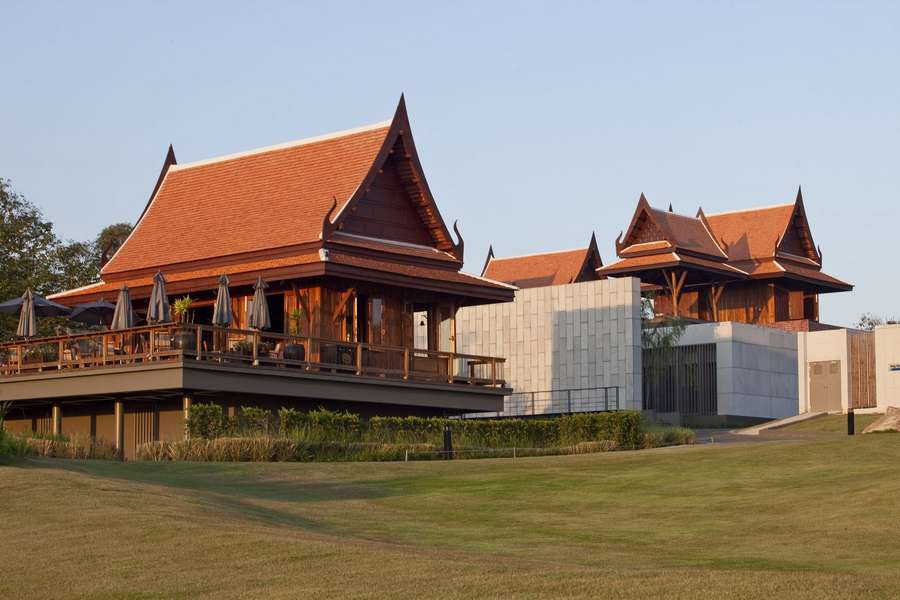
In the Hua Hin area, Smith and OBA have designed the Veranda Residence Hua Hin, currently under construction in Koh Takiab. It is the sixth and latest project he’s done for Veranda. OBA has also designed the Banyan Golf Club and the hotels V-Villas, Villa Maroc & the Veranda Resort and Spa Hua Hin Cha Am.
This magazine’s last two issues featured Smith/OBA designed hotels in our monthly “Let’s Stay” feature, the Hyatt Regency Bangkok Sukhumvit and the Veranda High Resort in Chiang Mai.
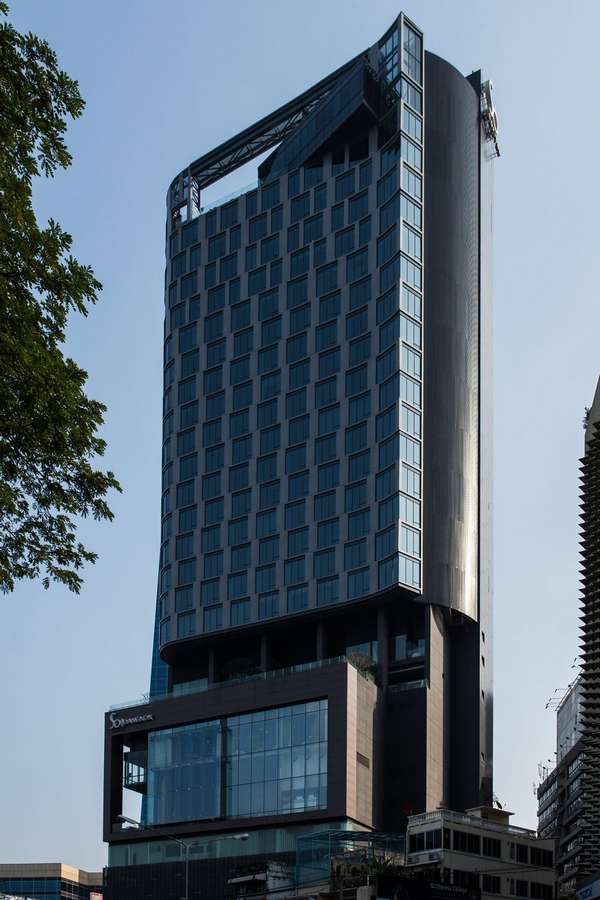
Built on a grassy incline at the intersection of Sathorn and Rama IV, SO Sofitel Bangkok, some say, is Smith Obayawat’s masterpiece. Like a treasured hardback book with both covers equally intricate, SO Sofitel Bangkok presents two façades on both major roads. The tower, with differing metallic shades and shifting glazed and solid panels, creates the sensual illusion of curves. In contrast, the tower sits upon a glass, zinc and stone podium with strong, clear definition, surrounded by shallow pools. Lava stone columns rise up at the ground floor entrance. Ascending to the ninth-floor lobby, guests are greeted by panoramic views of Lumpini Park. Both within the podium and the tower, airy three-storey atriums reveal elevated bridges and innovative spaces for relaxation. Higher up, rooftop restaurants, sky terraces and alfresco dining ensure sweeping views of the city and the park below.
This month, HOT Magazine is thrilled to sit down with Smith Obayawat to discuss his life, his journey & his passions.
HM: Smith, let’s start at the beginning, where were you born, what were your early years like and can you share a happy memory of those days?
SO: I was born in Bangkok to a middle-class family which made me humble, I spent most of my time on studying. I was quite a good student, entering a good school and hung out with many good friends who were all different and we played a lot of sports. I was the only one in my group who was interested in anything artistic. My Dad and Mom have said they were always proud of me because they did not have to tell me what to do, they gave me a lot of space and allowed me to be independent.

HM: At what age did you realize that architecture was your calling and was there a specific person or moment when the lightbulb switched on and you knew that’s what you wanted to do?
SO: I think around ten. In school we had to write a report for our teacher, ”What will you be?” Many of my friends chose Doctor, Army, Engineer or Businessman, I’m the only one in the class that chose architect. One of my uncle’s was an architect and he seemed to have a very enjoyable life compared to others. He would draw, sketching house designs, hospitals and hotels. He had an orchard in the suburbs, played piano and violin, plus, importantly, he drove a BMW!… He seemed very calm and relaxed. Later in life when I actually had to choose a profession for schooling, I disappointed my parents a little bit because I did not want to pursue medical school but they were OK and accepted my decision.
HM: You went to Chulalongkorn University for your architecture degree and then to the University of Minnesota in the USA for your Masters. What were your college days like? Were you a hard-working student focused on your studies or did you also take time to enjoy the college experience? And why did you choose the University of Minnesota?
SO: I wouldn’t say that I was hard working in my undergrad life but I think I was a good student who always finished my assignment on time. My University of Minnesota decision came as a surprise. I was admitted to a couple Universities, however some Uni’s asked me to attend their language school first and to pass with a score above 580. But since my TOEFL score was at the bottom line of 550, Minnesota accepted me into their Grad school. Also I had a limited budget and time . U of M offered 4 quarters for a Masters in their Architecture program. Another reason was one of my friends was already attending a school there and he asked me to share an apartment with him and that was perfect for me at that moment.

HM: Once you had your degrees where did you do your internship and what did you learn most from that time?
SO: I was picked to work in my teacher’s office after finishing my 1st quarter of study and I worked there until I graduated. After graduation I moved to New York City to work for the retail design firm Walker group/CNI for 3 years. It was there where I learned about surviving in the design business. Also the period in New York taught you how to deal with many great people and big corporations.
HM: While you were learning your trade, did you have a mentor who played a big role in your development?
SO: All of my boss’s , teachers and friends, all of them contributed their notions of being a designer, a professional and a human being, starting with my first boss, Khun Nithi Stapitanond who is the founder of A49
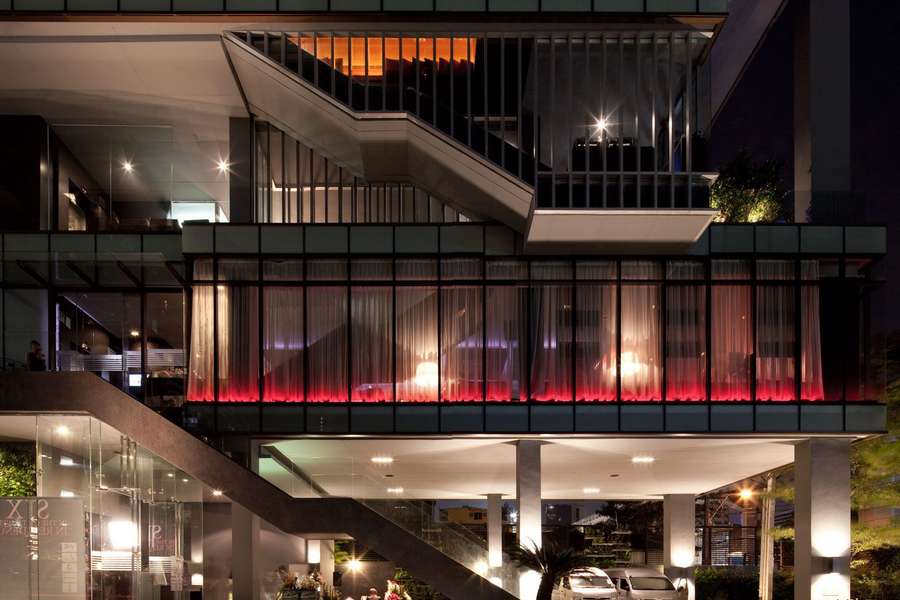
HM: You founded the firm The Office of Bangkok Architects, also known as OBA. What year was that and did you always know you wanted to run your own firm?
SO: I was a partner with another firm for 3 years before where I learned that the phrase “generation gap” is real. In 1994 I left and started OBA as a small studio. I never planned to have a big firm because I never believed in my management skills.
HM: How many architects and support staff do you have on your team?
SO: We are running with 50-60 staff for the past 10 years and I plan to maintain this size.
HM: Once you have designed a project, like the new Carlton Hotel in Bangkok, do you hand over your drawings to the building general contractor and your job is done or do you work closely with them until the completion of the project?
SO: It depends on who the contractor and construction manager are. Both of them at Carlton are exceptional so our duty is 90% done but you know in the real life, unforeseen issues arise and that’s when we have to intervene, make alterations or sometimes redesigns! On some projects however our work load doesn’t end until the day of opening due to the capability of the contractor during construction.
HM: As the principal of OBA, how much time do you spend working on existing jobs, generating new business and managing the firm?
SO: This is hard to say, it depends on the existing Jobs in process. If there’s a lot, I don’t need to go out much and actually, as a design firm, I can’t see myself going out with the intention to grab projects right away. Marketing is a long term plan. By doing good design work, sooner or later, you’ll get a new project. But frankly, I don’t spend much time managing the firm, it’s kind of automatic, naturally managing itself.
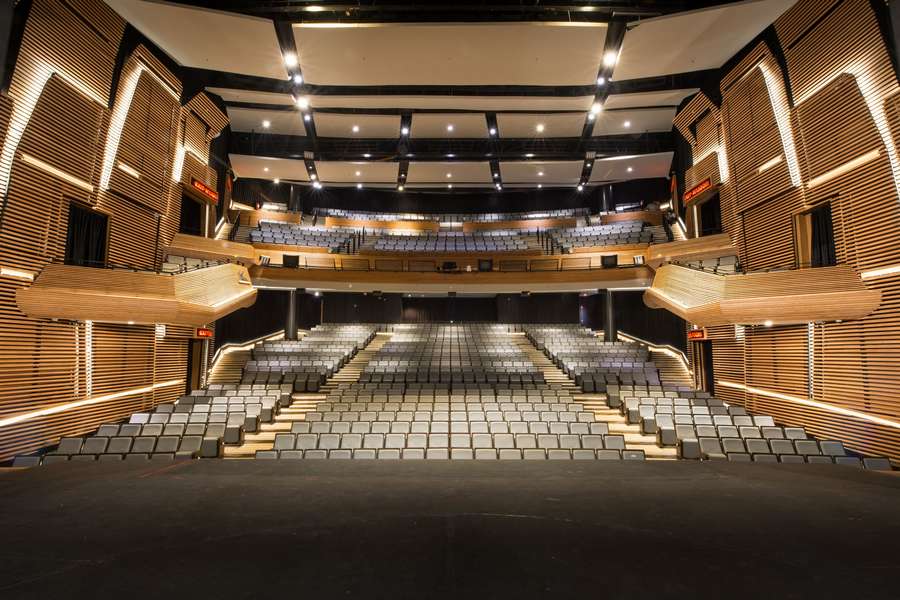
HM: OBA won the architectural design competition for Siam Square One, a 70,000 Square Meter, 7-story plus 2 basement floors shopping mall located at the heart of Bangkok’s fashion district. A concert hall was part of the design and later you were appointed by the mall’s anchor tenant to design a multi-purpose theater of 1,000 seats on the building top floor. Are you and your team interdisciplined, meaning can you design any type of project or do you have team members who specialize in designing things like concert halls, hotels and retail? .
SO: We absolutely want to be a multi-discipline firm and we really are. We designed many shopping malls and cinemas to claim that we have some knowledge, then came the first theater we did, Ratchadalai at Esplanade which is considered a real musical theater so why not do a 2nd one? We also designed a couple of successful resort hotels then we started to get awarded jobs one after another. Currently we do more city hotels and office buildings. Every firm needs a first project to start. My team accumulated their experience thru the projects we did and I would never call ourselves a specialist.
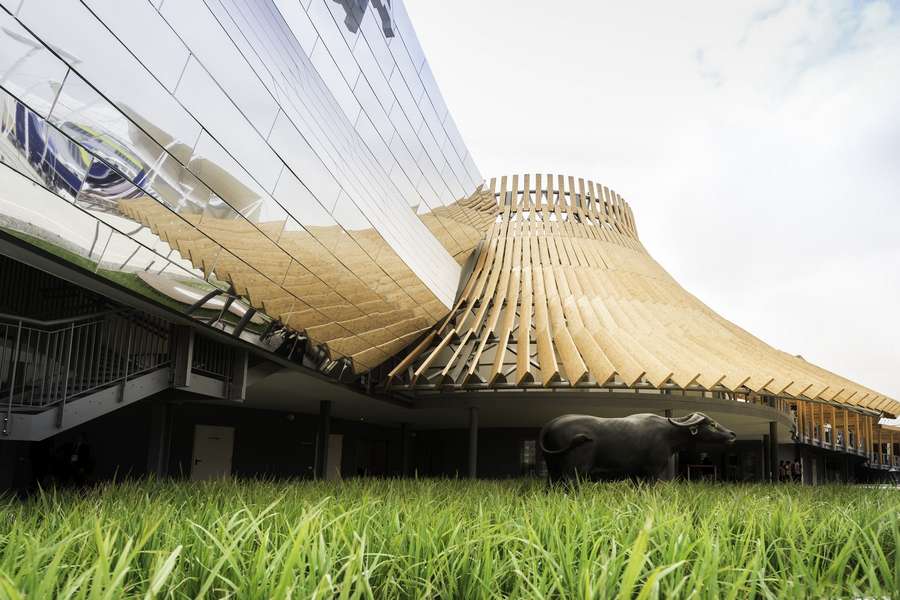
HM: Your firm also won the design competition for the Thailand Pavilion at Expo Milano 2015. That must have been an important job honor to win. What was the process like in coming up with the design and what was it like to touring the building for the first time?
SO: We were selected by a special panel and our design was well accepted by the government at the time. The design process was simple and straight forward but to convince everyone in Thailand that we no longer needed to offer the traditional architecture was a tough process. Of course, to see the Thailand Pavilion built from scratch to completion and to be there on the opening day where people lined up to visit was quite overwhelming.
HM: I understand your company also designs one-off private homes for well-known wealthy Thai’s. Is this something you do more for friends or an actual segment of your business?
SO: It’s quite difficult and a time consuming job to design a house for someone especially if you don’t know them well. That’s why we don’t have a lot of residences in our portfolio. You are right that we did it because we know them even though I cannot claim that we are friends well. They believe that we understand them and can compose the space that fits their lifestyle.
HM: Your company designed an IMAX theater in the Bahamas, how did that job come about?
SO: We were very excited at first that they came to Bangkok to look at our designed projects and they flew me to Nassau. It was a long process and good experience for me but after we finished the design, the Nassau City Planning Department intervened declaring that our façade design were too modern and outstanding, they were afraid that it would create a new paradigm on the Island where most of the architecture is British colonial style. We agreed to have their local architect redesign the façade. From Google Earth, It looks similar to our design but from the street level I couldn’t recognize it.
HM: With all the work that you and your firm have going, does it leave you any time for enjoyable pursuits and if so, what do you like to do when you aren’t working?
 SO: I’m a typical guy who loves music and sports. I gig every now and then with a band playing 70’s rock with friends at couple bars in Bangkok. Also in my spare time I enjoy playing football and golfing with old pals from high school. I’m lucky that I have designed 8 golf course clubhouses and they always welcome me to come back and play. Banyan in Hua Hin is one of the clubs but unfortunately I can only get there once or twice a year.
SO: I’m a typical guy who loves music and sports. I gig every now and then with a band playing 70’s rock with friends at couple bars in Bangkok. Also in my spare time I enjoy playing football and golfing with old pals from high school. I’m lucky that I have designed 8 golf course clubhouses and they always welcome me to come back and play. Banyan in Hua Hin is one of the clubs but unfortunately I can only get there once or twice a year.
HM: For the aspiring architects that are reading this, what advice would you give them?
SO: 1. Be patient. 2.Enjoy and be proud of what you are doing. 3. If you encounter to much suffering, go back to number 1.
HM: Finally, can you tell us what was your happiest day and why?
 SO: I’m not a philosopher alright…. but for me, every day without mental trouble, no argument , a simply serene state of mind, wherever I am, jogging track, at home, in my office, golf course, football field on stage or in the classroom, I always feel it’s a happy day and of course every morning that I wake up still alive, that is the happiest day.
SO: I’m not a philosopher alright…. but for me, every day without mental trouble, no argument , a simply serene state of mind, wherever I am, jogging track, at home, in my office, golf course, football field on stage or in the classroom, I always feel it’s a happy day and of course every morning that I wake up still alive, that is the happiest day.
HM: Thank you Smith for taking the time to be with us.


